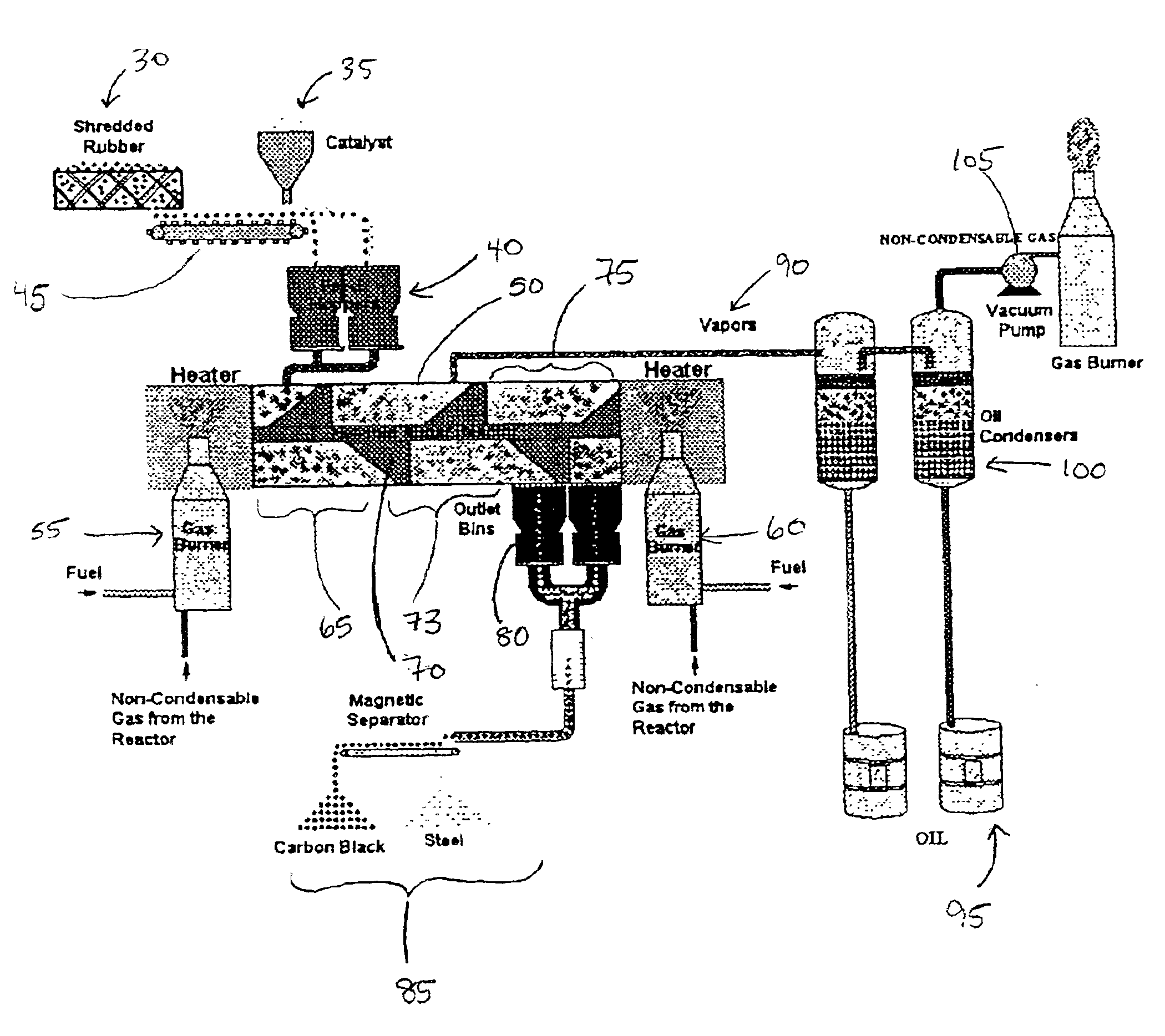Low energy method of pyrolysis of hydrocarbon materials such as rubber
a hydrocarbon material and low energy technology, applied in the direction of hydrocarbon oil cracking process, thermal non-catalytic cracking, products, etc., can solve the problems of accumulating approximately 242 million wasted tires nationwide, affecting the economic recovery of energy and chemical materials from tires, and a major disposal problem
- Summary
- Abstract
- Description
- Claims
- Application Information
AI Technical Summary
Benefits of technology
Problems solved by technology
Method used
Image
Examples
Embodiment Construction
The following example is intended to illustrate the invention and should not be construed as limiting the invention in any way.
Two pounds of rubber tires were loaded into a batch pyrolytic chamber having a 21 quart capacity, and 10 grams of a mixed metal catalyst consisting of aluminum, magnesium and bentonite in a mass ratio of 1:1:8 was dispersed over the rubber. The reactor was heated with LPG fuel burned at a rate of 16 l / min until oil condensate was produced and the reaction temperature reached 550.degree. F. in the first phase, as determined by a thermocouple placed in a piece of rubber in the chamber. The LPG flow was turned off at this point. The temperature continued to rise through the heat generated by the exothermic reaction until the temperature reached 750.degree. F. in the second phase. During the process the combustible gas product was observed by flaring with a pilot light to be within ignitable levels for approximately 20 minutes. The carbon black produced composed...
PUM
| Property | Measurement | Unit |
|---|---|---|
| temperature | aaaaa | aaaaa |
| temperature | aaaaa | aaaaa |
| temperatures | aaaaa | aaaaa |
Abstract
Description
Claims
Application Information
 Login to View More
Login to View More - R&D
- Intellectual Property
- Life Sciences
- Materials
- Tech Scout
- Unparalleled Data Quality
- Higher Quality Content
- 60% Fewer Hallucinations
Browse by: Latest US Patents, China's latest patents, Technical Efficacy Thesaurus, Application Domain, Technology Topic, Popular Technical Reports.
© 2025 PatSnap. All rights reserved.Legal|Privacy policy|Modern Slavery Act Transparency Statement|Sitemap|About US| Contact US: help@patsnap.com



